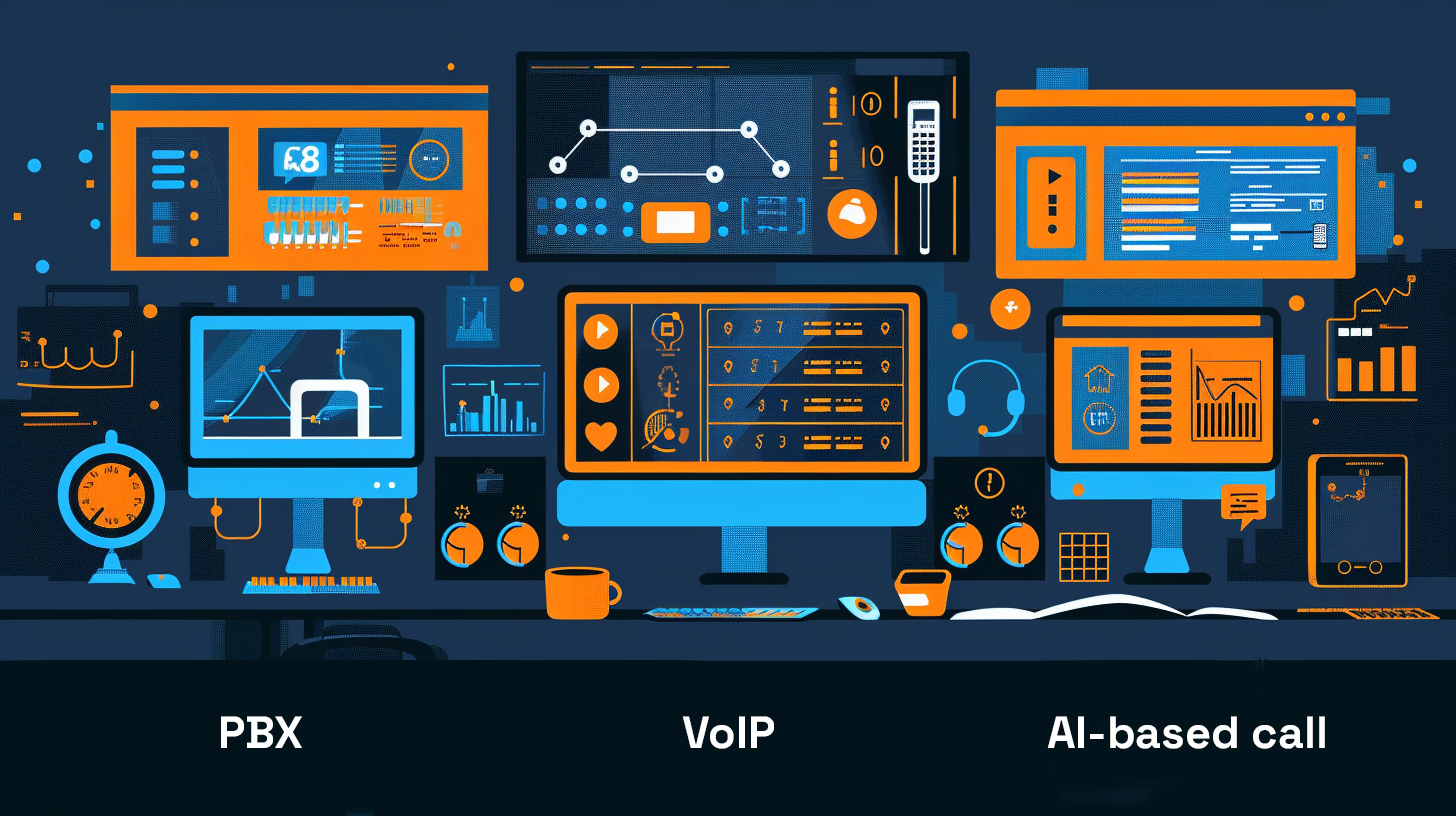Due to inadequate call routing systems, office managers and business leaders face mounting pressure from client complaints, missed opportunities, and overloaded staff. When urgent calls go unanswered, or clients get transferred multiple times, businesses lose revenue and damage relationships.
Call routing automatically directs incoming calls to the right professional based on rules you configure, eliminating delays that strain your staff and frustrate clients.
Modern call routing systems handle client communications across multiple channels — phone, text, SMS, secure portals, and chat — while allowing you to scale your business without hiring additional administrative staff.
By the end of this guide, office managers and business leaders will be able to:
- Eliminate client complaints about poor phone experiences.
- Understand the different types of call routing systems and their advantages.
- Scale operations without adding reception or administrative headcount.
- Implement call routing best practices to improve professional productivity.
Transform your business communication challenges into competitive advantages with proven call routing strategies.
Understanding Call Routing for Professional Services
Call routing automatically connects incoming phone calls to the most qualified professional or relevant department, based on predetermined criteria. Instead of manual transfers, the call routing system utilizes routing rules to ensure that each caller is directed to someone, or a group, who can effectively handle their specific needs.
The Three-Phase Call Routing Process
- Client Qualification: The system identifies the caller’s needs through direct dial numbers, automated menus, or caller input linked to your client database.
- Priority Queuing: Calls are organized by client tier, matter urgency, and unique business requirements.
- Expert Matching: The system uses client input — such as selected department, account type, or keywords — to match the call with an available team member whose skills, role, or permissions best align with the request.
The call routing system considers multiple factors simultaneously: business hours, caller’s client status, internal processes, and professional availability. This happens in milliseconds while maintaining your professional image.
Core System Components
- Client Recognition: Integrates with client management software to identify callers and their matter history using customer data within your CRM.
- Departmental Routing: Directs calls based on personnel specialties and client requirements using different call routing strategies.
- Priority Management: Handles urgent matters quickly.
- Billing Integration: Tracks time for businesses that bill hourly.
Compliance Features: Ensures professional standards and regulatory requirements.

Types of Call Routing Systems
Traditional PBX Systems
Traditional PBX systems rely on on-premise hardware with basic call routing rules. They require dedicated phone lines, costly hardware upgrades, and specialized maintenance.
Cloud-Based VoIP Systems
VoIP systems transmit calls over Internet connections. Cloud-based platforms, such as TechmodeGO, host your routing infrastructure in the cloud, eliminating hardware requirements and IT maintenance needs. On-site hardware, by contrast, is costly to maintain, prone to downtime, and difficult to scale as your business grows.
Cloud-based routing allows instant rule modifications through web browsers, enabling remote work capabilities essential for modern businesses.
Professional Services Advantages:
- No capital equipment costs.
- Predictable monthly expenses.
- Client management/CRM integration.
- Remote work capabilities.
- Built-in compliance features and audit trails.
Intelligent Call Routing
Intelligent call routing systems analyze customer data, professional expertise, and workload patterns, thereby optimizing routing decisions. They consider factors such as caller history, agent performance, and even the caller’s mood to determine the best match.
For businesses handling high call volumes, AI integrations can significantly reduce average call handling time while improving customer experience. The technology automatically adjusts based on employees logged into the system, availability, and seasonal patterns.
Choosing the Right System
Here’s a decision framework:
Choose Traditional PBX if you have under 5 professionals in one office with no remote work needs, a dedicated IT staff, and are comfortable with limited features and no plans for growth or modernization.
Choose Cloud-Based VoIP if you have 5+ employees or need remote work capabilities. This option works best when you want predictable costs, CRM integration, and the ability to scale without significant technology investments. It’s ideal if you’re ready to modernize from legacy phone systems.
Choose AI-Powered Intelligent Call Routing if you handle high call volumes, have complex routing needs across multiple departments, or want automatic optimization based on seasonal demands.
Essential Features to Look For
When shopping for a call routing solution, certain features distinguish between a system that works and transforms your customer service. Choose features based on your business size and complexity:
For Small Teams (5-15 people):
Basic Call Distribution: Your core need is simple: quickly get calls to available people. Look for round-robin distribution that spreads calls evenly among your team and simultaneous ring functionality that allows multiple people to be called at once, ensuring someone is always available to answer. For clinics exploring small business tools that can help improve communication and efficiency, there are many AI-powered solutions worth considering.
Simple IVR Menus: Keep it basic with a maximum of 2-3 menu options. More complexity confuses callers and defeats the purpose.
For Medium Teams (15-50 people):
Skills-Based Routing: Now you have specialist groups who handle different types of calls. Route technical questions to your IT-certified staff, payment issues to accounting, and sales calls to your best closers.
Advanced IVR with Callbacks: Multi-level menus become useful: “Press 1 for Sales, Press 2 for Support,” followed by “Press 1 for Technical Issues, Press 2 for Billing Questions.” Include callback scheduling when wait times exceed 2-3 minutes.
For Larger Operations (50+ people):
Omnichannel Routing: Handle phone calls, chats, video, and texting through a single system. When a customer sends an SMS about a billing issue, route it to the same specialist who would handle their phone call for consistent service.
Advanced Analytics: Track detailed metrics across all channels. Monitor first-call resolution rates, agent utilization, and customer satisfaction scores to identify patterns that continuously optimize staffing and routing rules.
Interactive Voice Response (IVR)
IVR systems speed up call handling by providing automated menus that direct callers to the correct department or agent. Modern IVR can handle sophisticated workflows:
- Multi-level Menus: Create layered menu systems that guide callers through increasingly specific options.
- Voice Recognition: “Say ‘help’ to reach our customer service department” or “Say ‘appointment’ to schedule a meeting.”
- Account Integration: “Say or enter your account number” to pull up customer history before routing.
- Smart Callbacks: “Current wait time is 8 minutes. Press 1 to hold or Press 2 to receive a callback and maintain your position in the queue.”
Advanced IVR systems offer callback scheduling when wait times get too long. Instead of staying on hold, customers can request a callback that either holds their place in the queue or is scheduled for a later time, improving satisfaction while keeping your phone lines clear.

Business Impact on Professional Services
Enhanced Client Experience
Professional call routing significantly enhances client experience by ensuring clients reach qualified professionals on their first contact. Skills-based routing eliminates unprofessional transfers and repeated explanations, reducing client complaints and improving your business’ reputation.
Improved Professional Productivity
Automated routing eliminates administrative overhead that overloads your staff, allowing professionals to focus on client work instead of managing misdirected calls.
Advanced systems consider employees logged into the system when routing calls, reducing missed opportunities when calls go unanswered.
Business Growth and Scalability
Call routing enables sustainable growth without proportional increases in administrative headcount—a critical advantage for office managers managing tight budgets.
Professional Services Benefits:
- Eliminate administrative hiring costs as you scale.
- Reduce client acquisition costs through improved experiences that prevent missed opportunities.
- Enhance client retention substantially by eliminating frustrating phone experiences.
For office managers, client retention improvements are particularly valuable, as acquiring new clients costs significantly more than retaining existing relationships. Additionally, reduced administrative overhead directly impacts your bottom line.
Overcoming Implementation Challenges
Managing High Call Volumes
Implement a dynamic queue management system that redistributes calls across multiple channels when phone queues exceed capacity. Callback functionality reduces hold times substantially, while overflow routing ensures that calls are answered.
Professional Expertise Matching
Address this with sophisticated skills-based call routing that considers employee expertise. Regular skills profile updates ensure accuracy as professionals gain certifications or develop new expertise.
Integration Difficulties
Legacy phone systems often struggle to integrate with modern routing platforms, creating operational silos. Cloud-based routing platforms address this by seamlessly connecting with existing CRM systems through APIs, providing real-time data synchronization between routing engines and agent desktops.
Compliance Requirements
Professional services are subject to strict regulatory requirements regarding client confidentiality and communication documentation. Implement contact center solutions with built-in compliance features, including automatic call recording with consent management, secure communication protocols, and detailed audit trails.

Implementation Best Practices
Configure Industry-Specific Routing Rules
Start by mapping your business processes and client service protocols into routing logic. Begin by setting up departmental routing, configuring professional availability schedules, and creating overflow rules for when primary professionals are unavailable.
Add client priority handling for VIP clients and urgent matters. Establish emergency protocols for after-hours crises. Implement callback systems for non-urgent matters when wait times exceed standards.
Avoid common mistakes: overly complex menu systems, failing to test off-hours routing, neglecting to update professional skills, and setting unrealistic performance targets.
Map Professional Expertise
Document each professional’s expertise, certifications, language skills, and client assignments. Create proficiency ratings for routing complex matters to senior professionals while directing routine questions to qualified junior staff. Establish backup routing for unavailable professionals.
Update profiles regularly as team members complete education, gain certifications, or change assignments to ensure your call routing system effectively distributes incoming calls based on the most appropriate agent using a skills-based routing system.
Monitor Performance
Track key indicators, including average client wait times (target professional standards), call abandonment rates (maintain low levels), and first-contact resolution rates (aim for high performance). Monitor professional utilization for balanced workloads.
Continuous Improvement
Regularly analyze client feedback to identify communication inefficiencies that may be affecting your reputation. Review complaints and compliments for routing patterns.
Test routing modifications carefully before full implementation. Review performance quarterly and integrate client relationship data for enhanced personalized routing.
This ongoing evaluation ensures your call routing system remains an effective call routing service, optimizing call distribution methods and maintaining high customer satisfaction.
Getting Started
The choice is clear for decision-makers: continue with your current system and risk client defection from poor experiences, or implement professional call routing to transform client service into a competitive advantage that drives referrals and business growth while controlling operational costs.
Start with your most critical pain point — client complaints about wait times, missed opportunities from unprofessional transfers, or overloaded staff — and build systematically by exploring one of the best VoIP solutions tailored to your call routing needs. If your business is evaluating a provider change, this guide to VoIP switching can help ensure your transition doesn’t disrupt service or team productivity. Your clients expect professional-grade communication that reflects the quality of your services, and your team deserves systems that support their productivity rather than creating friction.
Want to see how Techmode’s unified communication platform can ensure your clients always reach the most appropriate agent immediately? Let’s discuss building a call routing solution tailored to your business needs.
Frequently Asked Questions
How does call routing enhance client communication in professional services?
Call routing streamlines client communication by automatically directing calls to the right professional based on client needs, expertise, and priority levels. This call management feature improves response times and overall customer satisfaction while maintaining professional standards.
What advantages do businesses gain from using advanced call routing solutions?
They support scalable growth by optimizing call distribution without adding administrative overhead, enhancing both operational efficiency and client experience. These automated call routing solutions improve call center operations, agent availability, and overall workforce management.
In what ways do cloud-based call routing systems outperform traditional PBX setups for professional services?
Unlike traditional PBX systems, cloud-based call routing systems offer compliance features and AI-driven routing capabilities that cater to the complex demands of modern businesses. The routing process in cloud-based phone systems is more efficient, ensuring inbound calls are distributed effectively using advanced routing software.
Which features are essential when selecting a call routing system?
Key features include seamless integration with CRMs, robust compliance, and client data integration for personalized service. Effective call routing strategies incorporate interactive voice response (IVR) systems, call queues, and automatic call distribution to optimize call handling.
How does skills-based routing contribute to improved client satisfaction?
Skills-based routing enhances first-contact resolution rates, ensuring clients receive knowledgeable assistance promptly. It is a critical component of an effective call routing system and call routing service, leveraging agent skills for optimal client outcomes.
What obstacles might firms face when deploying call routing systems, and how can they be addressed?
These can be overcome with dynamic queue management, sophisticated routing algorithms including predictive behavioral routing, cloud-based integration, and compliance-focused features. Implementing an efficient call routing system and call routing software can mitigate many of these issues.










